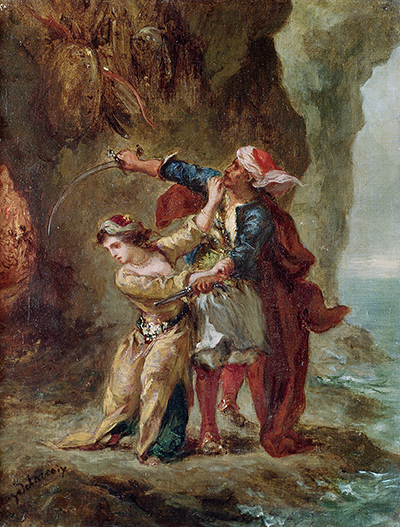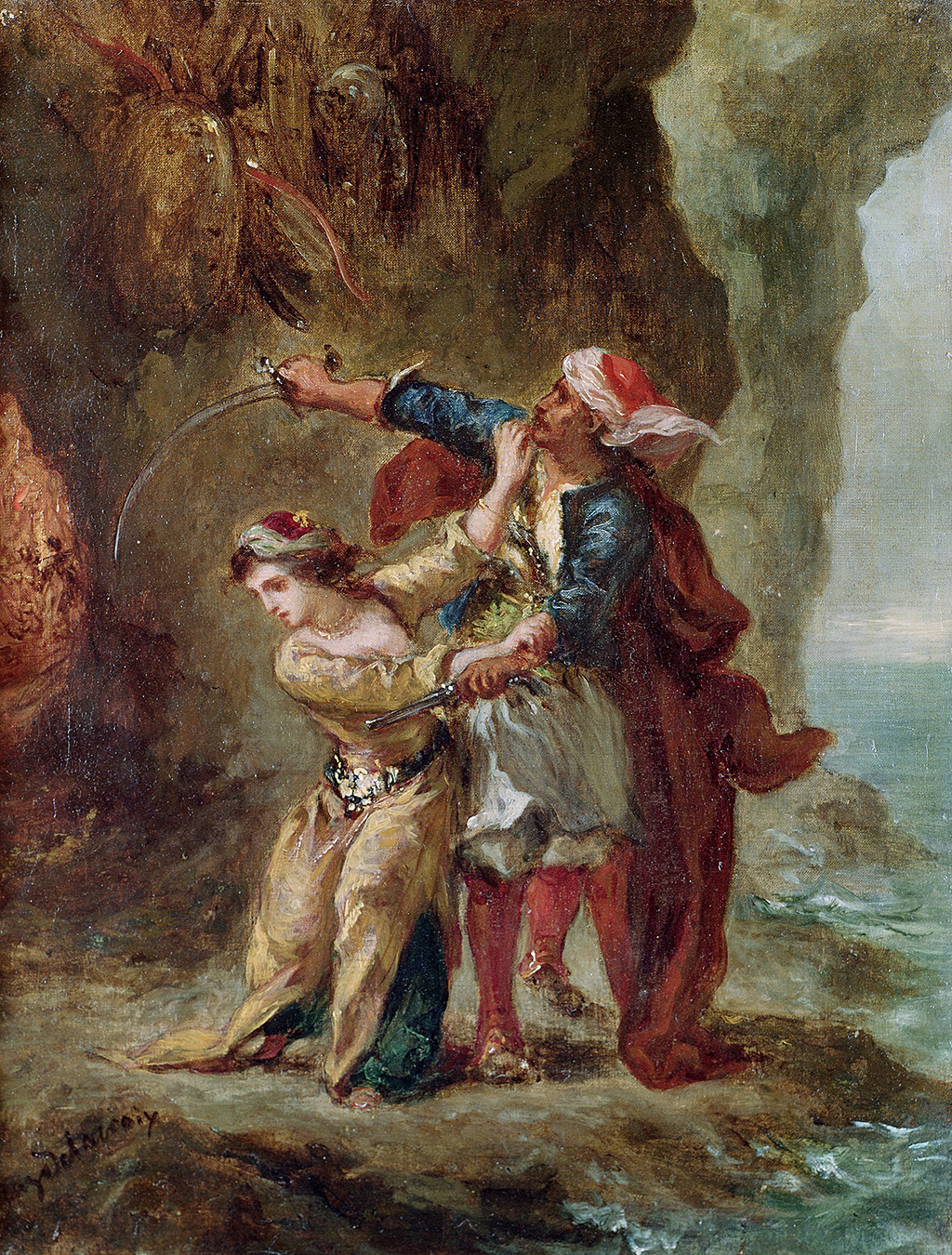The Bride of Abydos provides another example of the influence of British poet Lord Byron, who spearheaded the literary side of the Romanticist movement. In this case, he had produced a poem of the same name which Delacroix brings to life with this interesting piece from the 1840s.
Much of what we remember about the style of Delacroix's paintings can be found here. Content-wise, we are again on a small beach with a rocky enclave around us. The sea drifts in as activity occurs between two figures in front of us. As these two people grapple, the water gives an extra element of peril to the atmosphere, but who are these individuals? Thankfully, with roots in historic literature, much of this artist's work could easily be referenced for further detail, even without any additional help from Delacroix himself. Selim and Zuleika are known to be the two characters from the original poem that we find here. The artist would actually produce four versions of this figurative piece, one of which can be found at the Museum of Fine Arts of Lyon whilst a later, follow-up is in the Louvre, Paris. The poem itself was published in 1813, with the French translation released eight years later.
The setting is actually Turkey, in an area known as the Dardanelles. Zuleika is the daughter of Pasha Giaffir and her lover is Selim, a pirate (hence his attire and weaponry). She is planned for marriage, against her wishes, and so flees the tower in which she was being kept. The painting captures the couple making their escape and awaiting help by the shore. In the distance you may be able to spot soldiers who are on their tail and become alerted by the sound of Selim's gun being fired. He does this in order to attract help and rescue for them both, but it provides their location to those in pursuit. It is Giaffir who leads this party and he eventually shoots Selim dead, leading to tragedy which marks the end of the tale. His body washed out to sea and she is left in deep grief for the rest of her life. These types of dramatic scenes are typical of the Romanticist movement, and similar was found in the career of the other major contributor to this movement, namely Theodore Gericault. Examples from his career include Raft of the Medusa, Sighting the Argus, and The Race of the Riderless Horses.
Delacroix was highly talented as an artist and able to merge different influences together. His career was at times involved with Islamic culture and then later he would draw on English influences, due to friendships with a number of British painters. He also took on literature that was relevant to his work, with Romanticism being a movement which encompassed both visual art and also much poetry as well. Ultimately, the two streams of creativity would feed off each other. He adored the clothing of North Africa and in this example turns his attention over to Turkish culture, though it had similarities through the influence of Islam as well as its style of governance. It was rare for Delacroix to actually produce four different versions of the same topic, particularly as they were so similar in style, but this underlines the importance of this topic and Byron's poetry more generally to him.





